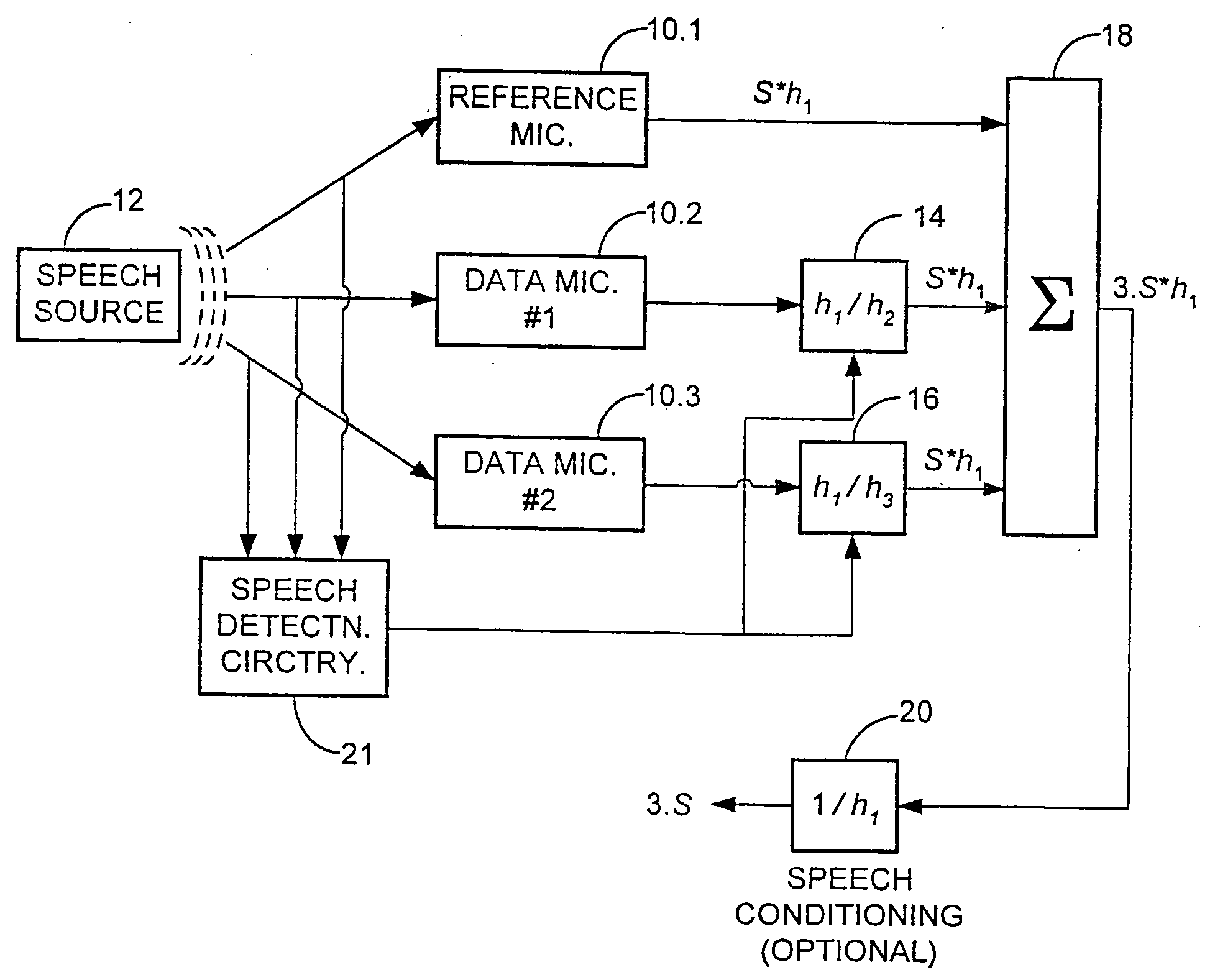Microphone array processing system for noisy multipath environments
- Summary
- Abstract
- Description
- Claims
- Application Information
AI Technical Summary
Benefits of technology
Problems solved by technology
Method used
Image
Examples
Embodiment Construction
[0019] As shown in the drawings, the present invention is concerned with a technique for significantly reducing the effects of noise in the detection or recognition of speech in a noisy and reverberant environment, such as the interior of a moving automobile. The quality of speech transmission from mobile telephones in automobiles has long been known to be poor much of the time. Noise from within and outside the vehicle result in a relatively low signal-to-noise ratio and reverberation of sounds within the vehicle further degrades the speech signals. Available technologies for automatic speech recognition (ASR) and speech compression are at best degraded, and may not operate at all in the environment of the automobile.
[0020] In accordance with the present invention, use of an array of microphones and its associated processing system results in a significant improvement in signal-to-noise ratio, which enhances the quality of the transmitted voice signals, and facilitates the success...
PUM
 Login to View More
Login to View More Abstract
Description
Claims
Application Information
 Login to View More
Login to View More - R&D
- Intellectual Property
- Life Sciences
- Materials
- Tech Scout
- Unparalleled Data Quality
- Higher Quality Content
- 60% Fewer Hallucinations
Browse by: Latest US Patents, China's latest patents, Technical Efficacy Thesaurus, Application Domain, Technology Topic, Popular Technical Reports.
© 2025 PatSnap. All rights reserved.Legal|Privacy policy|Modern Slavery Act Transparency Statement|Sitemap|About US| Contact US: help@patsnap.com



